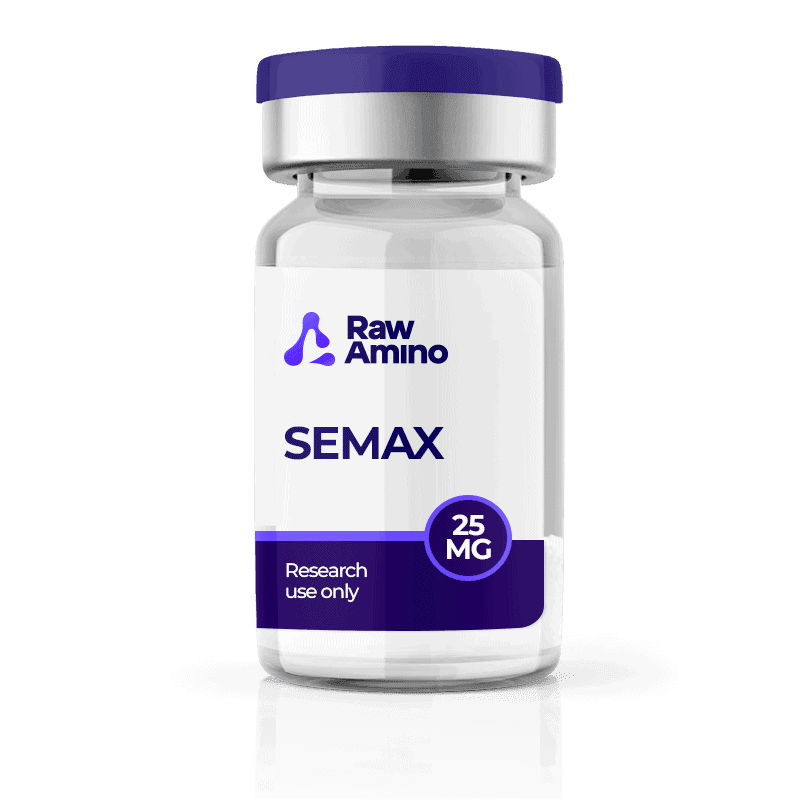
Semax – 25MG
$58.00
Discount per Quantity
| Quantity | Discount | Price |
|---|---|---|
| 5 - 8 | 5% | $55.10 |
| 9 + | 10% | $52.20 |
Scientific Overview of Semax
Semax is a synthetic peptide derived from a short fragment of adrenocorticotropic hormone (ACTH), specifically ACTH(4–10). The peptide is structurally modified with the addition of a Pro-Gly-Pro tripeptide at the C-terminal end, a modification designed to improve stability and potential activity in laboratory models. Research interest in Semax has centered on its possible influences in neuroprotection, gene expression, neurotransmission, and neuroplasticity.
Alternative Names: Synthetic ACTH(4–10) Analog
Semax Studies and Research Data
Semax and the Blood-Brain Barrier
Experimental findings suggest that modifications to the Semax molecule, including acetylation and the addition of the Pro-Gly-Pro tripeptide, may enhance stability and lipophilicity. These features have been proposed to facilitate Semax’s interaction with blood-brain barrier transport mechanisms, potentially supporting more efficient passage into the central nervous system. Laboratory models further indicate that increased molecular stability may prolong the peptide’s half-life under experimental conditions.
Semax and Stroke Research
Research conducted in Russian laboratories has explored the peptide in the context of ischemia and acute cerebral hypoxia. Studies in animal models suggest that Semax may modulate expression of genes associated with angiogenesis, erythropoiesis, and neuronal survival. Some reports describe enhanced recovery of motor function and increased plasma brain-derived neurotrophic factor (BDNF) levels following experimental stroke. These findings have raised interest in Semax’s possible neuroprotective actions and its interaction with vascular and immune signaling pathways.
Semax and Brain Networks
Functional MRI studies have suggested that Semax may influence the brain’s default mode network (DMN). The DMN is a system of brain regions active during resting states and implicated in transitions between rest and task-oriented states. Experimental observations indicate that Semax exposure may increase DMN activity, which could correspond to improved neural connectivity and broader support of cognitive processes.
Gene Expression Studies
Laboratory data indicate that the peptide may rapidly alter gene expression in the hippocampus and frontal cortex of rodent models. Within minutes of exposure, Semax has been shown to induce transcriptional changes in nerve growth factor (NGF) and brain-derived neurotrophic factor (BDNF) pathways. These genes are considered central to processes of memory formation, learning, and synaptic plasticity.
Cognitive and Nootropic Research
Semax and its parent peptide ACTH have both been studied for their potential effects on learning and memory in animal models. Reports suggest that Semax may enhance memory retention and provide protective effects against learning deficits associated with induced seizures. Early findings point toward its possible role as a nootropic-like agent under laboratory conditions, with speculative implications for cognitive resilience.
Serotonin-Related Pathways
Experimental data propose that Semax may alter serotonin signaling. In murine models, the peptide exposure has been associated with increased serotonin metabolite levels (notably 5-HIAA), with evidence of prolonged serotonergic activity following administration. This suggests possible modulatory effects on mood- and anxiety-related neurotransmission in laboratory settings.
Enkephalin Signaling
Semax has been reported to inhibit enzymes responsible for enkephalin degradation. By potentially stabilizing enkephalin levels, Semax may indirectly influence nociception and stress-related signaling. Given the close relationship between enkephalins and other neurotransmitter systems, these findings suggest a wider modulatory scope that warrants continued study.
Conclusion
Semax is a synthetic ACTH-derived peptide designed with structural modifications to enhance stability and potential interaction with neurobiological systems. Research has examined its possible roles in stroke recovery, gene expression, neurotransmission, and cognitive processes. Findings highlight possible influences on BDNF, NGF, serotonin, and enkephalin pathways. While results are exploratory, Semax continues to be studied as a model compound for investigating neuroprotective and neuromodulatory mechanisms.
References
- Medvedeva EV, Dmitrieva VG, Povarova OV, et al. The peptide Semax affects the expression of genes related to the immune and vascular systems in rat brain focal ischemia: genome-wide transcriptional analysis. BMC Genomics. 2014;15:228. doi:10.1186/1471-2164-15-228.
- Gusev EI, Martynov MY, Kostenko EV, Petrova LV, Bobyreva SN. The efficacy of Semax in the treatment of patients at different stages of ischemic stroke. Zh Nevrol Psikhiatr Im S S Korsakova. 2018;118(3.2):61-68. doi:10.17116/jnevro20181183261-68.
- Lebedeva IS, Panikratova YR, Sokolov OY, et al. Effects of Semax on the Default Mode Network of the Brain. Bull Exp Biol Med. 2018;165(5):653-656. doi:10.1007/s10517-018-4234-3.
- Mars RB, Neubert FX, Noonan MP, Sallet J, Toni I, Rushworth MF. On the relationship between the “default mode network” and the “social brain”. Front Hum Neurosci. 2012;6:189. doi:10.3389/fnhum.2012.00189.
- Agapova TIu, Agniullin IaV, Silachev DN, et al. [Effect of Semax on BDNF and NGF gene expression in rat hippocampus and frontal cortex]. Mol Gen Mikrobiol Virusol. 2008;(3):28-32.
- Scantlebury MH, Chun KC, Ma SC, Rho JM, Kim DY. Adrenocorticotropic hormone protects learning and memory function in epileptic Kcna1-null mice. Neurosci Lett. 2017;645:14-18. doi:10.1016/j.neulet.2017.02.069.
- Glazova NY, Manchenko DM, Volodina MA, et al. Semax attenuates behavioural and neurochemical alterations following early-life fluvoxamine exposure in rats. Neuropeptides. 2021;86:102114. doi:10.1016/j.npep.2020.102114.
- Eremin KO, Kudrin VS, Saransaari P, Oja SS, Grivennikov IA, Myasoedov NF, Rayevsky KS. Semax activates dopaminergic and serotoninergic brain systems in rodents. Neurochem Res. 2005;30(12):1493-1500. doi:10.1007/s11064-005-8826-8.
- Kost NV, Sokolov OY, Gabaeva MV, Grivennikov IA, Andreeva LA, Miasoedov NF, Zozulia AA. Semax and Selank inhibit the enkephalin-degrading enzymes from human serum. Bioorg Khim. 2001;27(3):180-183. doi:10.1023/a:1011373002885.
Disclaimer:
The products mentioned are intended solely for laboratory research and in-vitro experimentation. They are not approved for human or animal use of any kind. All details provided are for educational purposes only. By purchasing from this site, you agree to comply with our Terms and Conditions.
13 reviews for Semax – 25MG
Only logged in customers may leave a review.
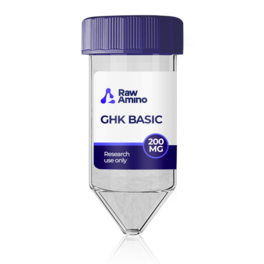
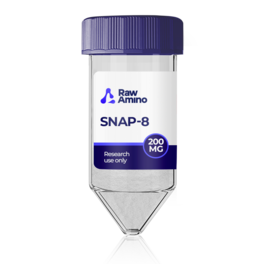
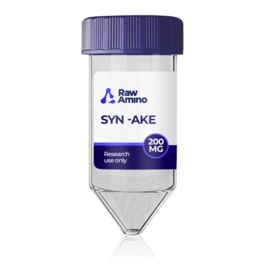
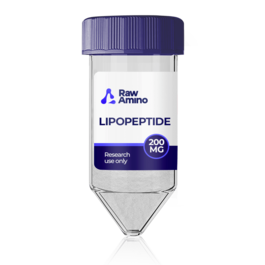
ion129x –
corey9521 –
katherine1644 –
uhowell –
loved this, gonna request more. thanks a lot.
Christine W. –
data700z –
Catherine754 –
quant642 –
NicholasW –
miguel5737 –
vial982 –
william6455 –
vial188z –